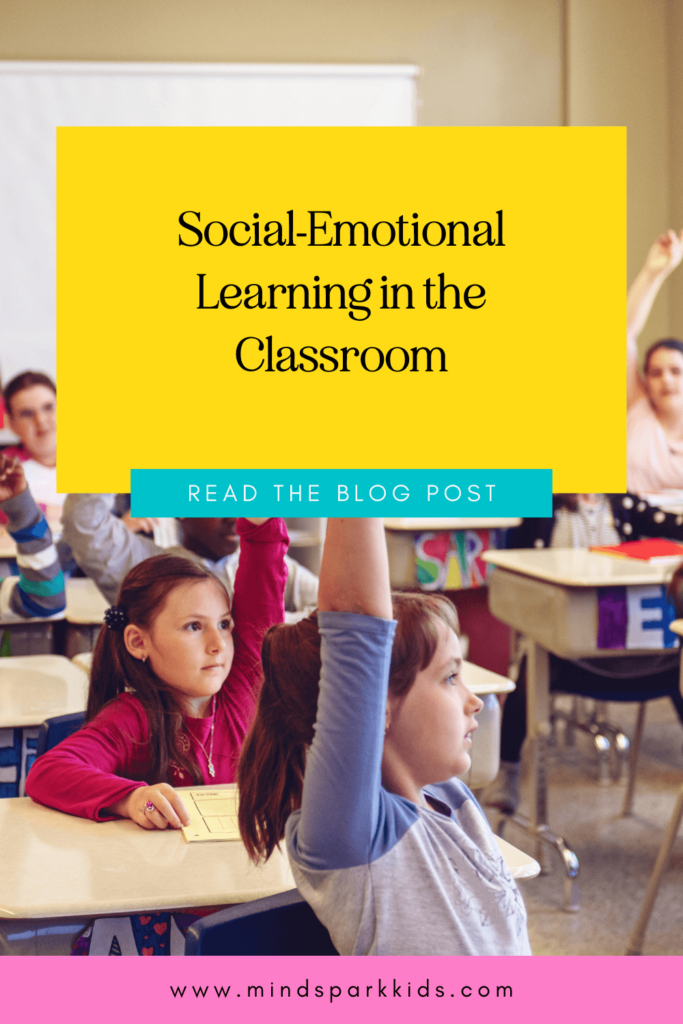Teachers across the globe are tasked with the job of ensuring their students learn, understand, and retain the academic skills and concepts taught daily within their classroom. In addition, they are also called upon to teach many invaluable social-emotional skills which can often become a daunting task. If you are an educator struggling to balance the pressure of teaching academics with the necessity of teaching Social-Emotional Learning, you may find that these 5 tips will help get you moving in the right direction.
1. Morning Meeting
This is a great time for your class to join together, work as a team, and explore various Social-Emotional Learning concepts. Time can be a limiting factor within the classroom so you can keep this short and sweet. Present a weekly question pertaining to SEL and choose a few students each day to answer the question. You might even focus on a specific concept that you notice has been a struggle among many students. Make sure everyone gets a turn to share but no one feels pressured to add to the conversation.
2. Daily Affirmations
It is important to teach, and foster, a positive self-image beginning with even our youngest students. Speaking daily affirmations is a great way to promote a positive growth-mindset among your students. It also unites your class and teaches students to be supportive and caring toward one another.
3. Teachable Moments
There are so many moments throughout any given day that provide opportunities to stop and teach SEL skills in the context of real life. These moments are not always presented at an ideal time; however, SEL should be viewed as just as valuable of a learning opportunity as academic subjects. You will find that when you take the time to stop, discuss, and explore a difficult situation with your students that the result will benefit everyone involved. Students will learn how to manage their emotions, discuss difficult moments, and learn to work through conflict.
4. Quote of the Day
Post a new quote at the beginning of each day and give your students time to think about the message and reflect on their feelings on the topic. Depending on the age of your students you could have them write a one sentence reflection on a note card or draw a picture to explain how the quote makes them feel. After completing the activity, take a few moments to choose students to share or, if you are short on time, have them pass their writing or artwork to someone nearby.
5. SEL Games
There are many ideas and resources targeted at games for students to explore the five competencies of Social-Emotional Learning. Utilize Pinterest and TeachersPayTeachers to save on time while discovering games and activities which will engage your class in meaningful learning and social-emotional growth.
The various activities above are just ideas to get you started on a path toward developing valuable social-emotional skills within your students. All of the ideas can be utilized for students from Kindergarten through High School and it is important to know that SEL should be happening for all ages. As educators we know that each class will need something different in terms of topics, concepts, and teaching strategies. You are encouraged to use these activities as jumping off points but to develop ideas and activities that work best for your unique group of students.
By Hana Damico
Try MindSpark Kids FREE for 7 days!
At MindSpark Kids, we help parents, caregivers, educators, and mental health professionals teach children how to develop necessary life skills. Why? Because socially and emotionally intelligent children grow up to be healthy, happy adults.
MindSpark Kids is an online membership with a database of social and emotional learning videos and worksheets to help children understand their emotions, make good decisions, and think critically.

Download your FREE Emotions Parent & Educator’s Guide
Join our newsletter and download our FREE guide now and start building your child's emotional intelligence today!